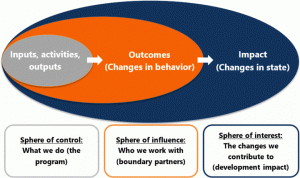
Should 360 feedback be used for performance management and not just for development? This is a hotly debated question with experts coming down on both sides. We believe the answer is yes: seeking feedback from multiple parties who interact with employees—including supervisors, colleagues and direct reports—can go a long way to enhance your performance management system.
However, it isn’t easy, it isn’t for everyone and there are a few hurdles to keep in mind. Here’s an honest look at the potential concerns with using 360 feedback and how to overcome them.
First, the concerns:
- You aren’t going to be successful in bringing about change if people resist their data. Using 360 feedback as part of a process that affects their salaries and chances for promotion increases the likelihood they’re going to resist.
- Studies have shown that when raters believe others will be harmed by what they say, they aren’t going to be honest.
- Appraisal by peers can pose problems when the raters are competitors for rewards and promotions. Some raters may intentionally paint a negative picture of a key competitor.
- There are multiple paths to effective performance and most behaviors relate to outcomes in a complex way. While behaviors may be relevant to effective job performance they may not be sufficient for evaluating overall performance where both what you do and how you do it are important
Clearly the use of 360 feedback in the performance management process poses challenges and risks for the organization and the individual. However, the benefits can also be great. Multi-source feedback when it is successfully integrated into the appraisal process can help remedy some of the flaws in most traditional appraisal systems.
What’s Wrong With the Traditional Performance Appraisals?
Three weakness trend to undermine the performance management process:
- Lack of agreement on performance criteria. If the boss and employees cannot agree on what is required for good performance, it’s hardly surprising they would disagree about the actual quality of the employee’s performance. Focus on concrete objectives without reviewing the employee’s behavior and its repercussions – but that’s only half the picture.
- The inability to handle lots of information. The limitations on human information processing often cause bosses and employees to simplify and work from overall impressions rather than specific details. Different approaches to remembering and processing large amounts of information contributes to a lack of agreement between the employee and the boss on the final evaluation.
- Concern about self-image. For some people appraisals are threatening, demoralizing and contentious encounters that bring all the employee’s defense mechanism in to play. Defense mechanism protect our self-concept; they can cause us to generate a subjective and distorted view of our contributions and behavior.
How 360 Feedback Can Enhance Performance Management
The use of 360 feedback cannot fix a broken performance management system, whether the failing is due to structural or administrative problems or larger problems with the underlying corporate culture. When use appropriately, however, multi-source feedback can improve an already effective appraisal system in three ways:
- Gain agreement on expectations. The addition of a 360 feedback process can help reduce the differences in perspective simply by assuring that the boss and direct report work from the same model of effective behaviors and outcomes. The 360 process is not just about collecting data; it’s also about articulating an agreed upon list of behaviors.
- Use a broader range of information. The use of 360 feedback provides a more objective measure of a person’s performance. Incorporating the perspective of multiple sources results in a broader view of the employee’s performance and helps minimize biases that result from limited views of behavior.
- Encourage open discussion. Studies have shown that people are more likely to modify their self-perception in the face of multi-source feedback. Multiple views of a person’s behavior also increases the likelihood that important elements of performance will not be overlooked on minimized which increases the likelihood of a well-run appraisal meeting in which the boss provides balanced feedback in a constructive manner.
Remember that 360 feedback is only one component of a performance appraisal, not the entire basis for the evaluation. Recipients of the feedback should use it as the basis for a conversation with their boss about development targets. We believe 360 feedback is most effective when used for goal setting – the part of the process that looks ahead rather than back. It’s an essential component of succession management.
Business & Finance Articles on Business 2 Community
(190)









